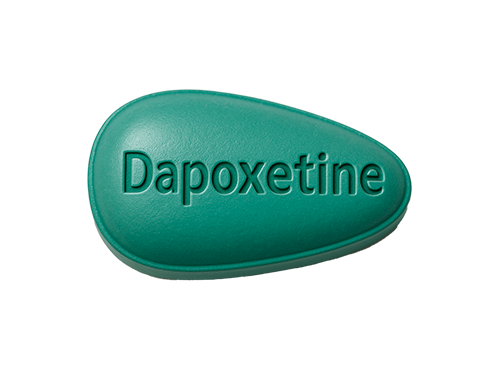- Dapsone: Comprehensive Product Description
- Mechanism of Action
- Pharmacokinetics
- Indications
- Dapsone Safety Information
- Dosage and Administration
- Contraindications and Precautions
- Dapsone Side Effects
- Hematologic Effects
- Dermatologic Reactions
- Neurological and Psychiatric Effects
- Gastrointestinal and Hepatic Effects
- Conclusion
Dapsone: Comprehensive Product Description
Mechanism of Action
Dapsone belongs to a class of medications known as sulfones and is primarily used for its antibacterial and anti-inflammatory properties. It works by inhibiting the synthesis of folic acid in bacteria, a crucial component required for their growth and reproduction. As a structural analog of para-aminobenzoic acid (PABA), Dapsone competes with PABA and disrupts the action of dihydropteroate synthetase, leading to impaired DNA synthesis. This bacteriostatic mechanism stops the proliferation of bacteria rather than killing them directly, making it an effective treatment for chronic bacterial infections such as leprosy and dermatitis herpetiformis. In addition, it is widely used in combination therapies for conditions such as tuberculosis and pneumonia caused by Pneumocystis carinii, especially in immunocompromised patients.
Pharmacokinetics
After oral administration, Dapsone is well-absorbed within two to eight hours and binds extensively to plasma proteins (70-90%), while its primary metabolite, monoacetyl-dapsone, has a binding affinity of up to 99%. It undergoes hepatic metabolism and is primarily excreted by the kidneys, with approximately 70-85% eliminated through renal clearance and a small portion (around 20%) excreted unchanged through the gastrointestinal tract. Due to its prolonged elimination half-life, it remains active in the system for an extended period, allowing for once-daily dosing in most therapeutic regimens.
Indications
Dapsone is primarily prescribed for the treatment of leprosy and dermatitis herpetiformis, a chronic skin condition associated with celiac disease. Additionally, it is used as part of combination therapies for tuberculosis, Pneumocystis carinii pneumonia (PCP), and other bacterial infections in patients with compromised immune function. Regular blood tests and liver enzyme monitoring are required during treatment to assess hemoglobin levels, platelet counts, and kidney function, ensuring safe long-term use.
Dapsone Safety Information
Dosage and Administration
Dapsone is administered orally, with the dosing regimen tailored to individual patient needs. As part of combination therapy, the standard dosage ranges from 50 to 100 mg per day or 1 to 2 mg per kg per day. In cases requiring higher doses, the maximum daily intake may reach 300 mg, but prolonged therapy at higher doses necessitates close medical supervision. Due to its extended duration of action, treatment with Dapsone is typically long-term and requires consistent adherence to achieve optimal results.
Contraindications and Precautions
Dapsone is contraindicated in individuals with known hypersensitivity to sulfonamides, severe anemia, liver dysfunction, or deficiencies in glucose-6-phosphate dehydrogenase (G6PD) or methemoglobin reductase, as these conditions increase the risk of hemolytic anemia. Its use during pregnancy and lactation is generally not recommended, except in cases where it is essential for the prevention of leprosy or dermatitis herpetiformis. Patients undergoing Dapsone therapy should have their blood parameters regularly monitored to detect early signs of hematological complications.
Dapsone Side Effects
Hematologic Effects
One of the most common adverse effects of Dapsone is dose-dependent hemolysis, often accompanied by elevated hemoglobin and reticulocyte levels. In some cases, hemolytic anemia may develop, presenting with symptoms such as fatigue, pallor, weakness, fever, and shortness of breath. Other rare but serious blood-related side effects include methemoglobinemia, agranulocytosis, and hypoplastic anemia, which, if left untreated, may result in fatal outcomes.
Dermatologic Reactions
Patients taking Dapsone may experience various skin-related side effects, including itching, dryness, redness, and peeling of the skin. More severe reactions such as toxic erythema, erythema multiforme, nodular erythema, or toxic epidermal necrolysis have also been reported. In rare cases, patients may develop a hypersensitivity reaction known as “sulfone syndrome,” which includes symptoms such as fever, exfoliative dermatitis, jaundice, lymphadenopathy, and methemoglobinemia.
Neurological and Psychiatric Effects
Neurological complications from Dapsone therapy include peripheral neuritis, which may cause numbness, tingling, burning sensations, or weakness in the hands and feet. Some patients have also reported mood disturbances, nervousness, headaches, insomnia, and neurotoxicity-related symptoms. These effects are typically reversible upon dose adjustment or discontinuation of treatment.
Gastrointestinal and Hepatic Effects
Gastrointestinal side effects such as nausea, vomiting, loss of appetite, and abdominal discomfort may occur, particularly at higher doses. Liver toxicity, including jaundice and hepatitis, has also been observed in some patients, necessitating liver function monitoring throughout the course of treatment.
Conclusion
Dapsone is a powerful antibacterial and anti-inflammatory medication widely used in the treatment of leprosy, dermatitis herpetiformis, and opportunistic infections in immunocompromised individuals. While it provides significant therapeutic benefits, its potential for hematologic, dermatologic, and hepatic side effects requires careful monitoring and individualized dosing. With proper medical supervision and adherence to prescribed guidelines, Dapsone remains an effective and essential treatment option for chronic bacterial infections and inflammatory conditions.









Reviews
There are no reviews yet.